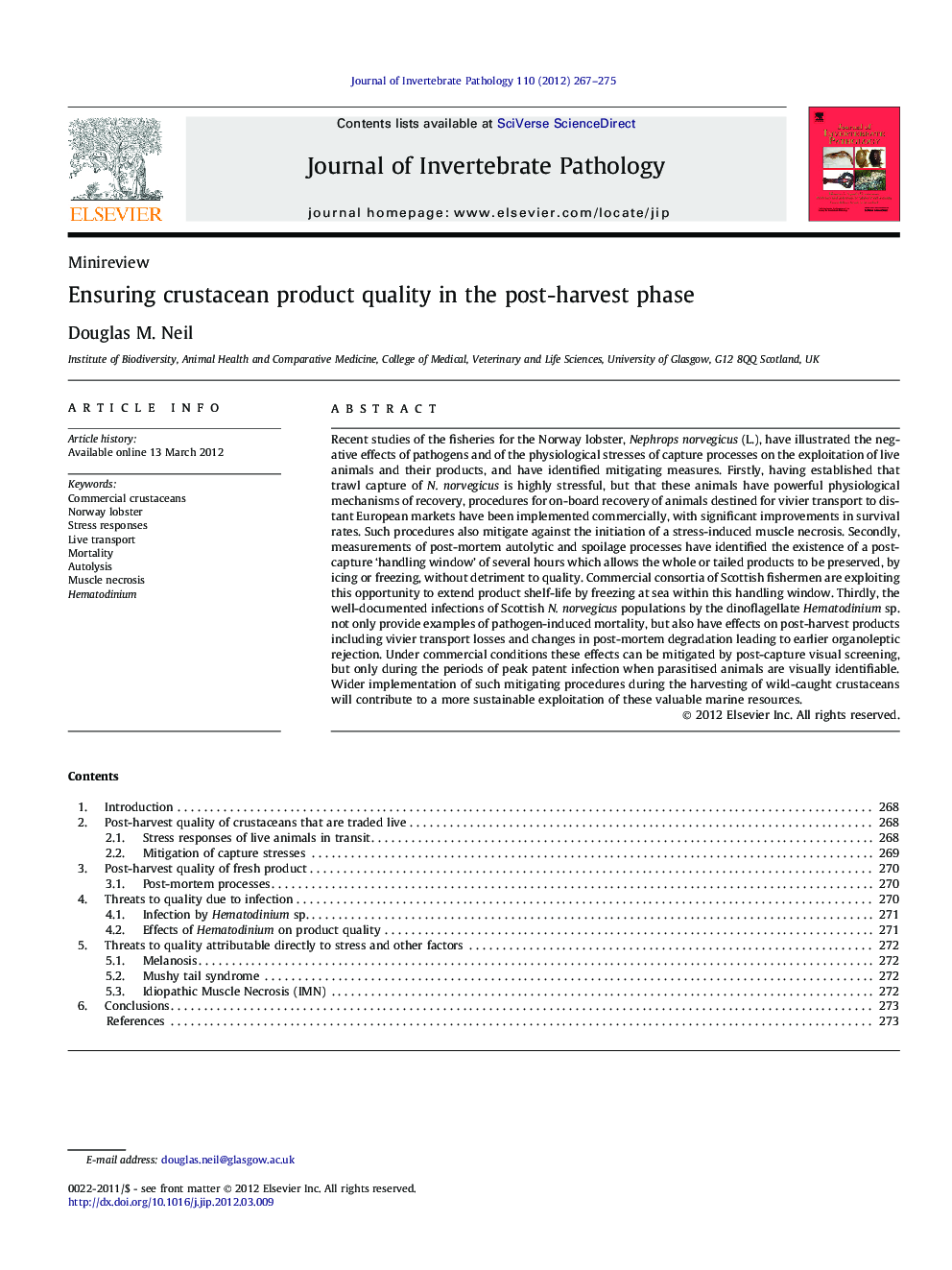| کد مقاله | کد نشریه | سال انتشار | مقاله انگلیسی | نسخه تمام متن |
|---|---|---|---|---|
| 4557911 | 1329907 | 2012 | 9 صفحه PDF | دانلود رایگان |

Recent studies of the fisheries for the Norway lobster, Nephrops norvegicus (L.), have illustrated the negative effects of pathogens and of the physiological stresses of capture processes on the exploitation of live animals and their products, and have identified mitigating measures. Firstly, having established that trawl capture of N. norvegicus is highly stressful, but that these animals have powerful physiological mechanisms of recovery, procedures for on-board recovery of animals destined for vivier transport to distant European markets have been implemented commercially, with significant improvements in survival rates. Such procedures also mitigate against the initiation of a stress-induced muscle necrosis. Secondly, measurements of post-mortem autolytic and spoilage processes have identified the existence of a post-capture ‘handling window’ of several hours which allows the whole or tailed products to be preserved, by icing or freezing, without detriment to quality. Commercial consortia of Scottish fishermen are exploiting this opportunity to extend product shelf-life by freezing at sea within this handling window. Thirdly, the well-documented infections of Scottish N. norvegicus populations by the dinoflagellate Hematodinium sp. not only provide examples of pathogen-induced mortality, but also have effects on post-harvest products including vivier transport losses and changes in post-mortem degradation leading to earlier organoleptic rejection. Under commercial conditions these effects can be mitigated by post-capture visual screening, but only during the periods of peak patent infection when parasitised animals are visually identifiable. Wider implementation of such mitigating procedures during the harvesting of wild-caught crustaceans will contribute to a more sustainable exploitation of these valuable marine resources.
Figure optionsDownload as PowerPoint slideHighlights
► Norway lobsters stressed by trawl capture have strong physiological recovery mechanisms.
► On-board recovery procedures improve survival rates and mitigate against myonecrosis.
► Post-capture handling time window is non-detrimental to preserving chilled products.
► Infections by Hematodinium affect product quality, as assessed organoleptically.
► Mitigating procedures in harvesting of wild-caught crustaceans promote sustainability.
Journal: Journal of Invertebrate Pathology - Volume 110, Issue 2, June 2012, Pages 267–275